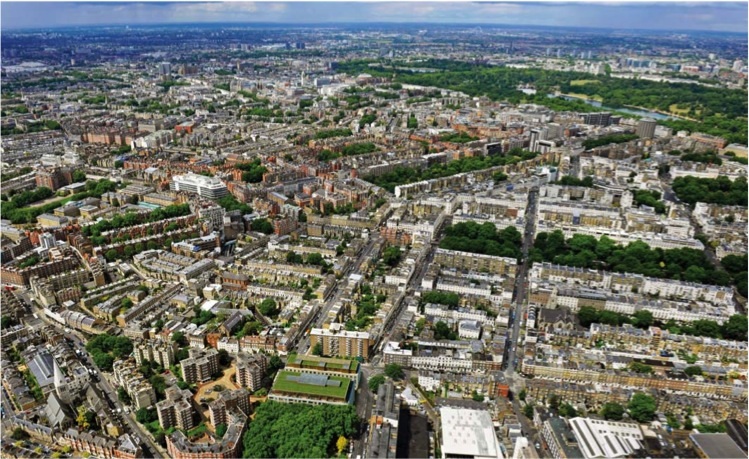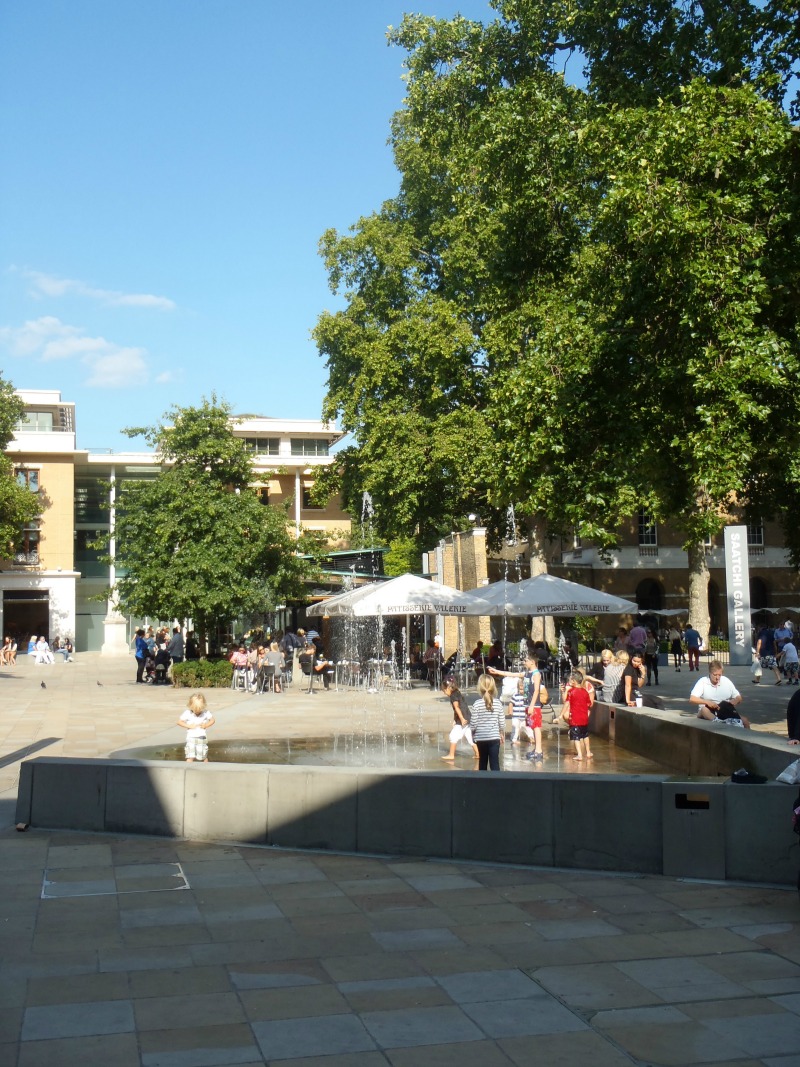The Landlords of London
According to the London Landlord Scheme, there are currently over 13,000 people letting out their property in London and the number is ever increasing. A fact not widely known is the majority of our city is owned by a handful of wealthy families, trusts or estates, some dating back to the 17th Century when wealthy aristocratic land owners started developing their land.
The Grosvenor Estate own around 300 acres of Belgravia and Mayfair, the Howard De Walden and Portman Estates are big players in Marylebone and the Cadogan Estate has the lion’s share of Chelsea.
We have compiled a brief rundown of the top estates and property portfolios.
The Grosvenor Estate
Gerald Cavendish Grosvenor, the 6th Duke of Westminster, controls the £10 billion Grosvenor Estate, making him London’s wealthiest landlord.

The family, whose history dates back to 1677 with the marriage of Mary Davies to Sir Thomas Grosvenor, is best known for owning 300 acres of prime London land including some of the most exclusive residential addresses in Mayfair bounded by Oxford Street, Park Lane, Berkeley Square and Avery Row and Belgravia bounded by Chelsea, Hyde Park and Buckingham Palace.
The Mayfair estate was completed in the 1780’s though much rebuilding was carried out in the 19th and 20th centuries. Belgravia was the vision of the then head of the Grosvenor family, Robert 1st Marquess who worked closely with Thomas Cundy and Thomas Cubitt to create the stunning, often white-stuccoed, Regency style squares, streets and crescents we have today.
Nowadays, Grosvenor have branched out into other avenues and play an important part in operating, investing and securing companies that contribute towards sustainable food and energy supplies along with having interests in rural estates across the United Kingdom and Spain, charitable foundations, art collections and historic archives. In total, the Grosvenor Estate employs more than 1,200 people
The best known Belgravia streets are Chester Square, Belgrave Square, Elizabeth Street, Pimlico Road and the jewel in Grosvenor’s crown, the magnificent Eaton Square.
Howard De Walden Estate
The Howard De Walden Estate is the main landlord of the central area of Marylebone. It owns, manages and leases the majority of properties across a 92 acre area extending from Marylebone High Street in the west to Portland Place in the east and from Wigmore Street in the south to Marylebone Road in the north.
The land, which was previously known as the Portland Estate, passed to the Howard de Walden family in 1879 and was subsequently renamed. Development continued at a rapid pace and in the late 19th Century due to the close proximity of hospitals to the area, doctors began setting up practices and one of the most famous roads in Marylebone, Harley Street, came to being. Today, the road remains synonymous with private medicine.
Although the plot lies within a conservation area, with some creative thinking from the Howard de Walden Estate the area has continued to flourish and now offers a colourful mix of quality commercial and residential property with an emphasis on cultural vibrancy.
The estate has an estimated worth of £2.5 billion and is to be inherited by Peter Czernin, the critically acclaimed film producer.
Wellcome Trust
The Wellcome Trust is a pharmaceutical foundation that has a £1billion property portfolio, mainly in South Kensington, and uses the income from the estate to provide funding into scientific research and charity work.
When Henry Smith, a wealthy Tudor philanthropist died in 1628, he left instructions to trustees of his estate that £1,000 must be invested in land with the income being used to pay towards the relief of English soldiers who had suffered at the hands of Turkish pirates. Some of the money was spent on farmland in Chelsea, Kensington and Westminster and from 1785 building work started. The estate stayed with the Henry Smith Charity until it was sold to the Wellcome Trust in 1998.
Cadogan Estate
The 8th Earl of Cadogan inherited the Cadogan Estate in 1997, putting him in second place just behind the Duke of Westminster. The Estate currently owns 90 acres of highly sought after prime residential, retail and commercial land in Chelsea and Knightsbridge including Cadogan Square, Sloane Street and the King’s Road, with an estimated worth of around £3.45 billion. The Cadogan Estate is also the freeholder to one million square feet of some of London’s most prized retail space including Peter Jones, Harvey Nichols and international stores including Chanel, Gucci and Armani.
Due to the changes in leasehold enfranchisement enabling long lease residential holders to buy the freehold, the Cadogan Estate, along with the others have been reduced quite dramatically in size. In light of this, money has been invested in other measures including the redevelopment of Cadogan Hall into a concert venue and the acquisition of the Duke of York’s headquarters in 2000. Located just off Slone Square, the former barracks site is today home to the iconic Saatchi Gallery, international retailers, luxury office space and leading eateries.

Historically, the Estate dates back to 1712 when Sir Hans Sloane, an Eighteenth Century scientist, purchased what was then the Manor of Chelsea. When he died, his estate was split between his two daughters, one of whom had married into the Cadogan family. When the second daughters’ son died with no heir, the estate passed wholly to the Cadogan family in 1821.
Crown Estate
As you would imagine, the Crown Estate is owned by the British Royal Family and although some property ownership can be traced to Edward the Confessor, the Estate dates back to 1066 when William the Conqueror claimed all land in England belonged to him. However over time, large areas of land were granted to noble men and sold off to raise revenue.
The Queen is one of the largest property owners in the UK, with an urban portfolio worth around £6.8 billion, which includes the entirety of Regent Street and a vast proportion of St James. In actual fact, in terms of geographical content, the estate is over 23 million acres including forests, farms and parklands however most of it lies below the sea; the estate owns the entire seabed within territorial waters and 55% of the foreshore. This is due to it never having been sold off.
The Crown Estate is owned by the current reigning Monarch for as long as they are on the throne and is passed down to each successor. Since 1760 under the Civil Lists Acts, the Monarch surrenders the net income of The Crown Estate to the Exchequer and responsibility for looking after the land falls on The Crown Estate under the Crown Estate Act. The Queen is not involved in any management decisions, however she does have private assets such as Balmoral and Sandringham which are hers to deal with as she so chooses.
In 2002, the Crown Estate began implementing a £1 billion investment programme to improve Regent Street’s commercial and visitor facilities attracting retailers such as Apple and other large international brands. In addition to this, they invested £500 million in St James’, which included a number of redevelopment projects. They also have the right to receive 23% of the income from the Duchy of Lancaster’s Savoy Estate in London and have invested over £250 million in out-of-town shopping centers and retail parks in places such as Liverpool, Nottingham and Portsmouth.
Portman Estate
Like the Howard De Walden Estate, the Portman Estate is also based in Marylebone, covering 110 acres to the west of the High Street from Marble Arch to Orchard Street on Oxford Street, Edgeware Road to the west, Baker Street in the east and up to Crawford Street in the north.
The Portman Estate dates back to the Sixteenth Century when, after the Seven Years’ War, Henry William Portman oversaw the build of Portman Square in 1764, Manchester Square in 1770 and both Bryanston and Montagu Squares in 1810. Undertaking a modern approach, the Portman family leased the land out to developers instead of organising the work themselves.
Throughout the last century, due to financial constraints the use of land has changed and the estate has taken a more dynamic approach to managing their 650 properties.
A new management team working under new trustees has been overseeing a five-year refurbishment programme costing £80 million, which is aimed at taking back leases and investing in new building projects. One such project is 55 Baker Street, the former Marks and Spencer head office which will be transformed into 61,700 square meters of office space, three storey town houses, leisure, retail and public space. However, the estate are keen to maintain the beautiful period buildings too and many large Georgian houses in the area have been turned into mansion blocks, grand hotels or office buildings and let on long leases.
The recent development of Portman Village in Seymour Place, Chiltern Street and New Quebec Street has also added to the area and attracted an eclectic range of shops, restaurants and fashion stores with an emphasis on independent food sellers and boutiques.
The Estates’ survival as active players of the London property scene for over three hundred years, surviving two World Wars, periods of economic boom and bust, changing Government policies, fashions and requirements shows their versatility and sustainability through generations. It is remarkable the majority of them have remained in the same families and we can certainly learn a lot from their tenacity going forward.

